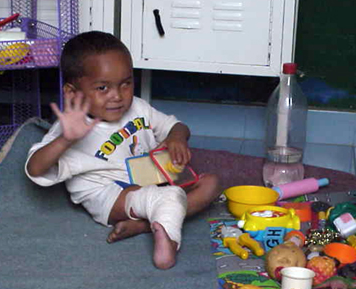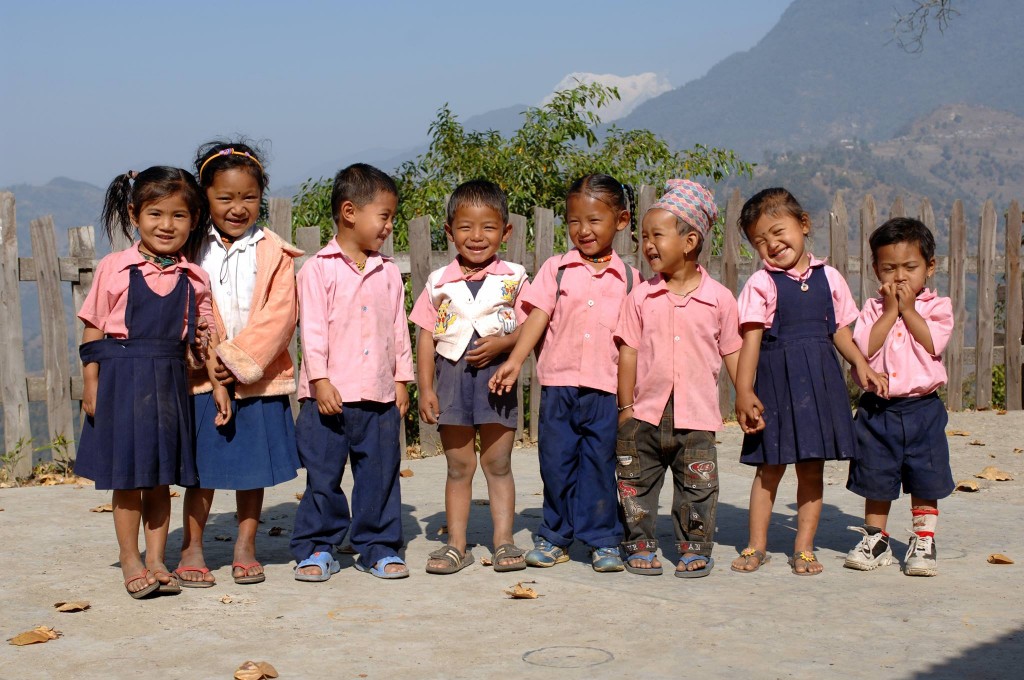Why Improved Cooking Stoves Are Good for Children
Sanu Bhai’s Story
One day, when Sanu Bhai was only 14 months old, his family left him behind when they went to the local market in the remote part of Tanahun district in Nepal. That day, they left Sanu Bhai behind because he was suffering from a severe eye infection, which would eventually cause blindness in his left eye.
When his family returned home from the market, they were horrified to find Sanu Bhai in agony. While they were gone, he’d fallen into the cooking stove, which hadn’t been properly put out. His lower right leg was severely burned and the folded leg had become fused together at the calf and thigh.

Because his family was poor and lived in a remote mountainous region, they did not have access to appropriate medical care for Sanu Bhai’s burns. They were left to heal largely untended and his leg remained twisted, leaving him permanently disabled.
Two years later, a man from the same district visited Sanu Bhai’s house to buy bamboo handicrafts from his parents. When he arrived, no one was home but two small children – Sanu Bhai and the younger sister he was charged with looking after.
This man, Ghana Syam, knew of the Asha Clinic in Pokhara, run by Child Welfare Scheme, an organization founded by 2009 World of Children Humanitarian Honoree Douglas Maclagan. Syam convinced Sanu Bhai’s parents to let him bring their son to Asha for an examination.
After several checkups and referrals, doctors determined that though his eye was beyond repair, they could do something to in part repair his damaged leg. Thanks to CWS and their local nonprofit partners, Sanu Bhai received several much-needed operations, medications, and a 4 month clinic stay for recuperation. They were able to provide all of this for just the equivalent of just $580 US dollars.
Burn Injuries in Poor Countries
Unfortunately, Sanu Bhai’s injuries are not unusual. According to the Global Alliance for Clean Cookstoves, “Burns from open fires and unsafe cookstoves are an insidious risk faced by poor households dependent on kerosene, open fires, and unstable metal or clay cookstoves.”
The WHO estimates that burns cause 265,000 deaths annually and that the majority of these occur in low- and middle-income countries like Nepal. The rate of child deaths from burns is 7 times higher in these countries than in middle-income countries and burns are the fifth most common cause of non-fatal childhood injuries for children aged 1-9 years old.
Worldwide, non-fatal burns are a leading cause of morbidity, including prolonged hospitalization, disfigurement and disability, often with resulting stigma and rejection. In Nepal, burns are the second most common injury, accounting for 5% of disabilities.
Programs run by Child Welfare Scheme and its partner organizations are attempting to get to the root of this problem. Their Improved Cooking Stoves Project helps poor households in mountain villages to install brick stoves that are safer for young children, use less wood, and produce less indoor pollution. In addition to preventing some burn injuries, these new stoves reduce the incidence of respiratory diseases in children and slow down deforestation and erosion of the Himalayan foothills.

Sources:
1. World Health Organization Media Center
2. Global Alliance for Clean Cookstoves